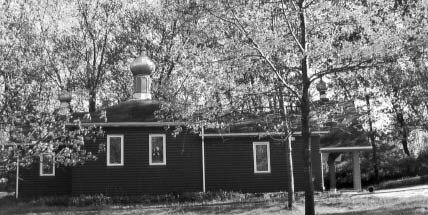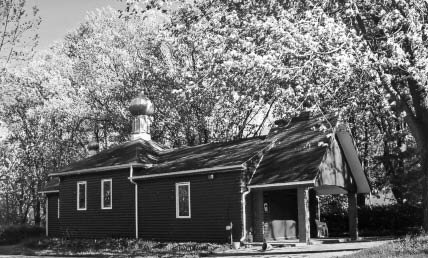
Discover rewarding casino experiences. 

Please Don't Quote Me |
However, when the bishop “found” Lost Lake with additional acreage, some of which showed the landscaping it had undergone in its recreational days, he was immediately drawn to buy it for its many possibilities. The idea of purchasing land in Stephenson had been to make a boys summer camp to which to bring city children to the healthful atmosphere supplied by the country. An item in the “Rockford Morning Star” recalled in May of 1970 the first steps in the creation of the retreat in 1961. “The discovery (in summer 1961) was a stroke of good fortune for these people who have known oppression and who are perpetuating a culture they have and believe contributes to the American way of life. Located eleven miles northeast of Freeport, Lost Lake is a seventy-eight acre subdivision purchased by the Chicago and Detroit diocese of the Russian Orthodox Church Outside of Russia. Thirty acres—It includes the area for summer camping and a church, barn and other communal areas—A man-made four acre lake remain the property of the church. The balance of the acreage of the subdivision contain fifty lots, all of which have been sold. Eleven families now live in the subdivision—formerly known by the diocese as Lost Lake—Vladimirove (St. Vladimir’s Land) and others plan to move in as time and money permit.” Chapter two of the 1970 Stephenson County History is “People Who Made Stephenson County” such as Native Americans, Fur Traders, Lead Miners, etc., Yankees, Southerners, Pennsylvanians to various German regions, Irish, Italians, Scandinavians; nearly every European culture plus Black Americans, showing how we here in the Northwest are a “melting pot” of flavors and have blended well in the mix of settlement. There were several “samples” of eastern Europeans ... Russians, Hungarians, Lithuanians, Estonians and so forth, but no larger group for the then Soviet Union until the 1960s and the Lost Lake’s new neighborhood. And it all began when the bishop got lost one dark and stormy night! A summer camp for youth was the primary focus in the beginning and the first season fifty children from the cities of the Chicago and Detroit diocese were welcomed for a month’s session ... To enjoy fresh air and green living. There also would be lessons in Russian language and culture, literature and history so as to instill traditions of their ancestry in the youngsters, many of whom were the offspring of refugees from Russia during World War II.
The staff, counselors, all young, had come with their parents through conflict in Europe to escape concentration camps, exile to Siberia, disease and oppression. They were volunteers who received no compensation the first years at Vladimirove. While such camps sponsored by the Orthodox church were in use in New York state and on the West Coast, that at Lost Lake was the only one in the Midwest. All staff remarked how blessed they were to be living in America and having the freedom to practice their religion and have choices in everyday life. Major projects for that initial summer, ‘61, was to build a church, remodel the farm’s barn into a guest house, build a swimming pool and plan for senior housing; permanent or summer, to welcome adults who had lived through the extreme vicissitudes of wartime and Communistic society. It soon became apparent that permanent housing was desired. Wells and private sewer systems were installed. By the late 1960s a dozen families were living full time at Vladimirove! Many were professional tradesmen ... Photographer, musical instrument maker, humor magazine editor, poet, composer, too, and a designer who worked at Micro-Switch in Freeport. Freeport and Rockford were job destinations. Children of full-time residents attended area schools. The Russian, Yugoslavians, Polish flavors were being blended into the mix of Northwest Illinois. The Lost Lake people had assembled because of their religion and source gives, “Bound together, as were the American Irish before them, their adherence to the church ... Is the denomination officially Russian Orthodox Church Outside of Russia, denotes its complete separateness from the Orthodox Church in Russia which they considered Communistic controlled. It originated, as did all other Orthodox churches in the Eastern or Byzantine division of early Christianity, now represented by the Greek Orthodox Church.” The Vladimirove Church was built as a first project and was dedicated in 1962 by Archbishop Seraphim Ivanov. It is seen here in photo, a modest structure that blends into its woodland setting but is distinctive for its golden “onion” domes typical of Eastern Orthodox churches. A taste of the cosmopolitan in rural Rock Run Township. Forty plus years after its origination it is still private property and directed by a board of subdivision and church members, the Vladimirove Cultural Association as it was first known. Posted signs at entrances explain its status. Nearly twenty years after the subdivision began, the ever-so talented Olga Gize Carlile whose interesting columns in an area daily are missed so much for their focus on the culinary, travel, social doings and more, wrote about the Easter season at the Lost Lake/Vladimirove settlement, it being the most important in the Orthodox religon. Certain foods were/are the center of their celebration Easter time such as kulich, a cylindrical yeast bread; or paskhka, a specialty cheesecake—like cheese and, of course the paschal lamb. Each household may have their own recipe or way of preparation but they are traditional like our turkey and pumpkin pie at Thanksgiving. The latter is not ceremonial here in America as the Eastern church foods stand for but acknowledge time-honored custom no matter what denomination.
The egg, however, is used in many cultures to symbolize birth/rebirth and is widely found in decorated form in its natural condition or manufactured and ornately bejeweled in the rarest of styles in Russia. Gift-giving is an Easter tradition instead of Christmas in Christian observances. Any of the Orthodox ritual forms, customs or food-related add more dimension to our Midwestern life-style and another chapter in an interesting history! Damming up the winding stream made the prosaic millpond more than a century ago, then a lake for pleasure. The grindstones drew folks from miles around to assist in providing them food, the basic, simple flour or meal. Perhaps, they lie beneath the surface of Lost Lake, it is believed, dumped there many years ago. They are the foundation now of a complex evolution that is American life.
|





